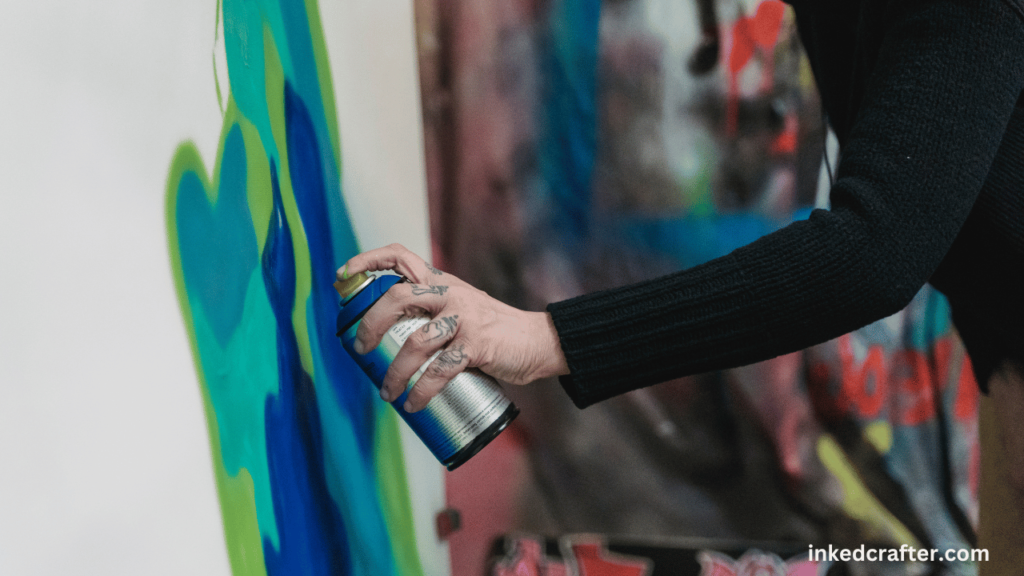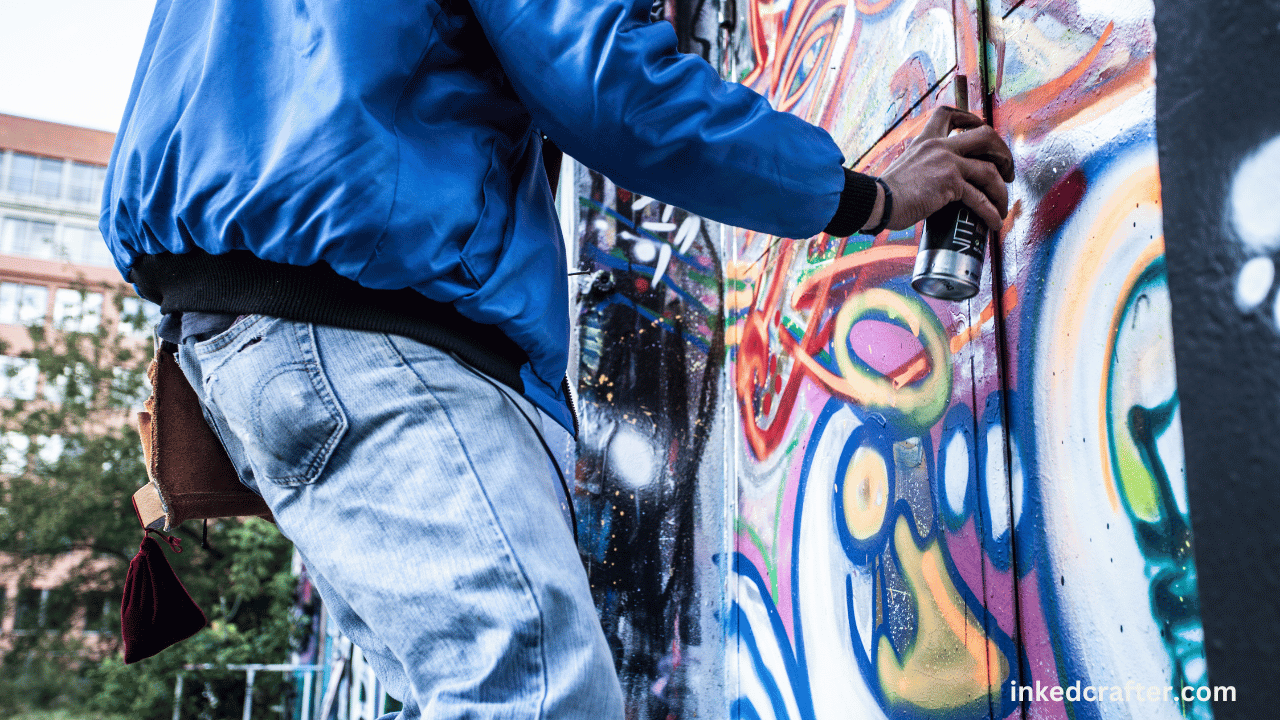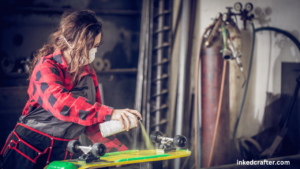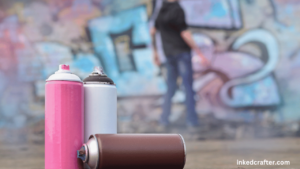Spray painting is a quick and easy method of giving old furniture a new lease of life, refreshing the decor in your house, or adding a splash of color to a project.
However, even spray painters with years of skill might suffer problems with the finish, such as cracking and wrinkles to the surface. You may overcome these faults and get a finish that looks professional if you have the correct tips and tactics. These imperfections can be annoying, but they can be overcome.
Within the scope of this article, we will investigate some professional recommendations for avoiding and repairing cracks and wrinkles caused by spray paint. These pointers will assist you in troubleshooting and improving your spray painting skills, regardless of whether you are a do-it-yourself enthusiast or a seasoned professional.
We are going to cover all you need to know in order to obtain a faultless finish, from the correct technique and preparation to the solutions to typical problems.
Consequently, if you have ever suffered from spray paint cracks and wrinkles or if you simply want to enhance your technique, stay tuned for our expert tips and techniques. If you put in the necessary practice and seek the appropriate advice, you will master the skill of spray painting and take your projects to the next level.
When it comes to spray painting, encountering cracks and wrinkles can be a frustrating challenge. Understanding the root causes of these imperfections and mastering the techniques to fix them is key to achieving a flawless project finish.
In this guide, we will delve into the complexities of paint cracking and wrinkling, explore preventative measures, and provide expert tips on remedying these issues.

Contents
What causes spray paint cracks and wrinkles?
Spray paint cracks and wrinkles can be attributed to various factors that affect the paint finish. Humidity plays a significant role in the drying process of spray paint. High humidity levels can cause the paint to dry slowly, leading to wrinkles and an uneven finish.
Additionally, not allowing sufficient drying time between coats can result in cracking. Applying a coat of primer before the base colour can help prevent cracking by providing a stable surface for the paint to adhere to.
How to fix cracks and wrinkles in spray paint?
The first step in addressing cracks and wrinkles in spray paint is to sand the affected area gently to create a smooth surface for repainting.
Once the surface is prepped, reapply a thin, even coat of spray paint, ensuring proper coverage. Applying the second coat with specific techniques to prevent a crackle finish, such as using light, consistent strokes to achieve a seamless result, is crucial.

Why does crackling occur in spray paint?
Crackling in spray paint often occurs when too thick of a coat is applied, impeding the drying process. This results in the top layer drying faster than the paint underneath, causing cracks to appear. To cure the crackle finish, sand the affected area lightly, then recoat with a thin layer of paint. Following these steps will help achieve a seamless finish without unwanted crackling effects.
Importance of proper technique when using spray paint
Proper technique is essential when using spray paint to avoid issues like wrinkling in the paint. Understanding the drying process is crucial; ensure each coat is allowed to dry fully before applying the next layer.
Avoid applying paint too thickly to prevent wrinkling, as this can lead to uneven drying and unwanted textures. Following professional tips will help you achieve a smooth, flawless finish on your projects.
Preventative measures to avoid spray paint cracks
To prevent spray paint cracks, choose the right type of spray paint formulated for your project’s substrate. Ensure an even application of each coat by using light, overlapping sprays. Finish off your project with a protective top coat to seal the layers and prevent moisture or other factors from causing cracks or wrinkles. By following these preventative measures, you can maintain a professional-looking finish on all your spray paint projects.
Conclusion
Addressing cracks and wrinkles caused by spray paint requires careful attention to detail and adherence to particular methodologies. Follow the advice and recommendations of professionals, such as properly preparing the surface, selecting the appropriate sort of paint, applying thin and even coats, and giving sufficient drying time between layers.
You may reduce the likelihood that your spray paint projects will develop cracks and wrinkles. In addition, having a grasp of the elements that can lead to cracking and wrinkling, such as incompatible paint layers, excessive thickness, or environmental variables, can be of great assistance in preventing these problems from arising in the first place.
You are able to get results that seem professional and overcome problems linked with the application of spray paint if you have patience and practice.
FAQs
- Q: How can I fix spray paint cracks and wrinkles on my project?
- A: To fix cracks and wrinkles in spray paint, sand down the affected area, repaint with a thin coat of paint, and ensure proper drying times between coats.
- Q: What causes paint to craze and what can I do to prevent it?
- A: Paint can craze due to applying too thick of a coat or painting in extreme temperatures. To prevent this, always apply thin coats, follow recommended dry and recoat times, and avoid painting in overly hot or cold conditions.
- Q: How important is it to use a primer coat before applying spray paint?
- A: Using a primer coat is crucial as it helps the paint adhere better to the surface, achieving a smoother finish and increasing the longevity of the paint job.
- Q: Can I apply multiple layers of spray paint without causing cracking?
- A: Yes, you can apply multiple coats of paint as long as you allow each coat to fully dry before applying the next one. This helps prevent cracking and ensures a professional finish.
- Q: How does humidity affect the spray painting process?
- A: High humidity can slow down the drying process of the paint, leading to potential issues like wrinkling or sagging. It is important to spray paint in low humidity conditions to achieve the best results.
- Q: What should I do if I notice the paint splitting or peeling after application?
- A: If you observe paint splitting or peeling, it is likely due to incorrect application or poor surface preparation. Sand down the affected area, reapply a thin coat of paint, and ensure proper drying times for a more durable finish.
- Q: How can I achieve a professional finish with spray paint?
- A: To achieve a smooth surface with spray paint, make sure to apply thin, even coats, sand between layers if needed, and follow proper drying and recoat times. This will help you achieve a flawless finish on your project.








